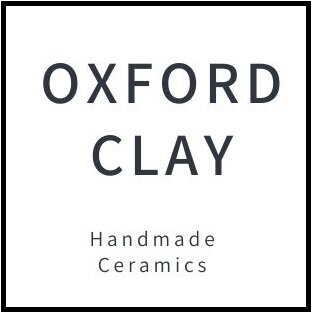The Problem With the Colour Blue In Pottery
The colour blue in pottery is made by a metal oxide called Cobalt. Potters use Cobalt in the form of Cobalt Carbonate or Cobalt Oxide. In fact, 8% of the total Cobalt produced globally is used to create blue in ceramics and pigments.
In this blog post, we explore some of the issues with Cobalt and what Potters can do about it.
Pottery coloured blue with Cobalt
The historical Cobalt mining industry in the United Kingdom
Cobalt has been used to colour pottery blue for hundreds of years. In fact in the 1800’s Cobalt was mined in the UK in Alderley Edge in Cheshire, when the supply from Europe was disrupted from 1803 - 1815 by the Napoleonic Wars.
Miners at Alderley Edge used pick axes to chip away at the rocks by hand in a long series of underground tunnels lit by candles. The substance they mined was known as Asbolite which was a mixture of Cobalt and Manganese Oxides.
How is Cobalt mined now?
Cobalt is now mined internationally and there are concerns with the way the Cobalt industry currently operates.
The Democratic Republic of Congo (DRC) currently produces more than 80% of the world’s Cobalt. Up to 30% of this Cobalt is mined either illegally or informally, in a practice known as ‘artisanal’ mining. In 2016 Amnesty International published a report into the Cobalt mining industry called ‘This is What we Die for’. The report highlighted serious risks to the health and welfare of those working in the Cobalt mining industry.
Artisanal miners work with hand tools to mine and sort the ore by hand. It is an unregulated industry and artisanal miners often do not have access to safety equipment. As a result, many artisanal miners are at risk of health problems such as respiratory and skin disorders, injuries and death from mining accidents (1).
Amnesty International also found thousands of children, some as young as 6 years old working as artisanal miners in the Cobalt mining industry (1). Some experts have estimated the number of children working in the artisanal mining industry mining Cobalt alone to be at least 35,000 (2).
The pollution caused by Cobalt mining is also a serious issue. Recent research has shown that the toxic pollution from Cobalt and Copper mines in the Democratic Republic of Congo is causing birth defects in the children of miners (3). Due to Cobalt and Copper mining, the Southern Katanga region of the Democratic Republic of Congo has been named as one of the top ten most polluted areas of the world (3).
What actions can Potters take?
Artisanally and industrially mined Cobalt ores are mixed together and traded in what are known as buying houses. The Cobalt ore is then exported internationally before being processed into blue ceramic colourants. There is therefore no way for Potters to tell whether the Cobalt they are buying has been mined artisanally or not (2).
Creating colour without Cobalt Oxide or Cobalt Carbonate
There is no other way to create the kind of intense deep blue colour in Pottery made by Cobalt. However, Potters can create colour in their pottery in more eco-conscious ways:
1.) Using Ball Clay high in Iron to colour pottery glazes.
Some Ball Clays such as Hymod Ball Clay are naturally high in Iron. When used as a glaze ingredient high Iron Ball Clay can add a subtle green colour to a pottery glaze. There is a recipe for a light green pottery glaze coloured naturally by Ball Clay in the book Eco-Friendly Pottery: 30 Simple Ways to Make Your Pottery Practice More Ethical and Sustainable.
2.) Using plant ashes in pottery glazes to colour pottery.
Plants take up minerals and trace metals from the soil as they grow. When plants are burned into ash and used in a pottery glaze they can create colour, naturally. The colour in plant ash pottery glazes mainly comes from naturally occurring magnesium and iron deposits in the plant’s tissue’s which remain after the burning process. The leaves of plants can be particularly high in these metals and often pottery glazes made from plant leaves can be particularly colourful.
Potters can create, light blues, whites, browns, pinks and purples just by using plant ash. If you’re interested in learning more about plant ash glazing and seeing some of the colours that can be created naturally there are 60 glaze tests in this book, Pottery Glazing With Plant Ash.
3.) Recycling metals into metal oxides.
Copper and Iron can actually be turned back into metal oxides and used to colour pottery! Copper Oxide can be created in the form of Verdigris which creates the colour green in pottery glazes. Iron Oxide in the form of Rust creates the colours brown, orange and black in pottery glazes.
Both of these metals are already widely available in the supply chain so no more mining needs to take place to create these colouring oxides. You can easily make both of these colouring oxides at home, with simple household ingredients.
You can find out how to do this in the book, Eco-conscious Pottery Glazing or the Make Your Own: Metal Oxides from Recycled Metal Mini Course.
If you’ve never made a pottery glaze before and are interested in learning how to make your own pottery glaze I’ve created this free How to Make a Pottery Glaze Workbook for you!
References
Amnesty International. 2016. "This Is What We Die for " Human Rights Abuses in the Democratic Republic of the Congo Power the Global Trade in Cobalt. London, Amnesty International
Kara, S. 2018. Is your phone tainted by the misery of the 35,000 children in Congo’s mines? Accessed at: <https://www.theguardian.com/global-development/2018/oct/12/phone-misery-children-congo-cobalt-mines-drc> on 19 August 2021
Kelly, A. 2020 Pollution causing birth defects in children of DRC - study. Accessed at <https://www.theguardian.com/global-development/2020/may/06/pollution-causing-birth-defects-in-children-of-drc-cobalt-miners-study> on 19.08.2021 .


